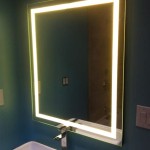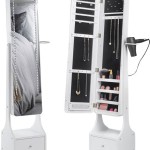How to Mirror Screen Android to PC
Mirroring an Android screen to a PC offers several advantages, from enjoying mobile games on a larger display to conveniently sharing presentations and conducting online demonstrations. Various methods facilitate this screen mirroring, each with its own set of features and system requirements.
Using a USB Cable
A direct USB connection provides a reliable and generally lag-free mirroring experience, particularly beneficial for activities requiring low latency, such as gaming. This method leverages the Android Debug Bridge (ADB) utility.
First, enable USB debugging on the Android device. This option is typically found within the "Developer options" menu, which may need to be activated by repeatedly tapping the "Build number" in the "About phone" settings. Connect the Android device to the PC using a USB cable. Download and install the platform-tools package (which includes ADB) from the Android Developers website.
Next, open a command prompt or terminal on the PC and navigate to the platform-tools directory. Execute the command "adb devices" to verify the device connection. If the device is listed, proceed with the command "adb shell screenrecord --output-file=/sdcard/video.mp4". This command initiates screen recording on the device. To mirror the screen in real-time, a third-party application such as scrcpy can be utilized.
Install scrcpy on the PC and, with the device still connected, run the command "scrcpy" in the command prompt or terminal. The Android screen should then be mirrored on the PC.
Using Wireless Mirroring (Miracast)
Miracast is a wireless screen mirroring standard allowing compatible Android devices to connect directly to compatible Windows PCs. This method offers greater flexibility than a wired connection but can be susceptible to network interference and may exhibit higher latency.
Ensure both the Android device and the Windows PC support Miracast. This information can usually be found in the device specifications or user manuals. On the Windows PC, open the "Connect" app by searching for it in the Start Menu. On the Android device, navigate to the screen mirroring settings, often found within the "Display" or "Connected devices" settings menu. The specific naming may vary depending on the device manufacturer and Android version. Initiate the connection process from either the PC or the Android device. The devices should automatically discover each other and establish a connection.
Troubleshooting Miracast issues can involve verifying network compatibility (both devices should be on the same Wi-Fi network), updating drivers, or consulting the manufacturer's documentation.
Utilizing Third-Party Applications
Several third-party applications facilitate Android screen mirroring to PC. These applications often provide additional features beyond basic mirroring, such as screen recording, remote control, and file transfer. Examples include AirDroid, Vysor, and ApowerMirror.
The specific setup process varies depending on the chosen application. Generally, these applications require installation on both the Android device and the PC. Ensure both devices are connected to the same network, and follow the application's instructions to establish the connection. Some applications may offer both USB and wireless connectivity options.
Choosing the Right Method
The optimal method for mirroring an Android screen to a PC depends on the specific requirements. For low-latency scenarios like gaming, a USB connection with a tool like scrcpy is recommended. For presentations or casual screen sharing, the convenience of Miracast or a third-party application may be preferred.
Troubleshooting Common Issues
Several common issues can arise during screen mirroring. Connectivity problems can often be resolved by ensuring both devices are on the same network, checking network settings, or restarting devices. Performance issues, such as lag or choppy video, may be mitigated by closing unnecessary applications on both devices or reducing the screen resolution on the Android device.
If issues persist, consulting the documentation for the specific mirroring method or application can provide further guidance. Ensuring that drivers and software are up to date is also a crucial troubleshooting step for both the Android device and the PC.
Security Considerations
When using screen mirroring, be mindful of the security implications. Only mirror to trusted devices and avoid mirroring sensitive information in public or unsecured environments. Be cautious when granting permissions to third-party applications, and review their privacy policies before installation.

How To Mirror Android Pc

How To Mirror The Screen Of Your Android A Pc Neowin

Top 5 Apps To Mirror Android Screen Pc Gizbot News

How To Screen Mirror Your Android Smartphone On Laptop Pc

No Root Screen Mirroring Android To Pc With 5 Methods Imobie

How To Mirror Pc Screen On Android Smartphone 2024

How To Screen Mirror Android Windows Pc

An Easy Step By Guide To Mirror Android Windows 11

How To View An Android Screen On A Pc

Tip How To Mirror Or Cast Android Mobile Phone Screen On Pc Askvg








